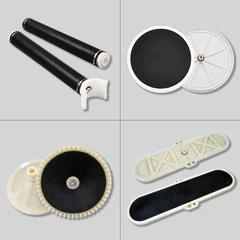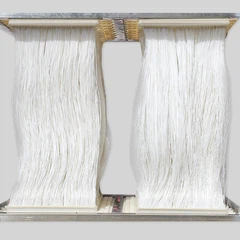Introduction
With the growing global demand for seafood, aquaculture production is expanding rapidly. Recirculating Aquaculture Systems (RAS) and flow-through systems are the two dominant models, but which one is better suited for your needs? In this article, AquaSust provides a comparative analysis of their advantages and limitations to support your decision-making.
What is Recirculating Aquaculture Systems (RAS)?

RAS is a closed-loop fish farming method, where water is continuously filtered, treated, and reused. Instead of relying on natural water sources, RAS keeps fish in controlled aquaculture tanks with advanced aquaculture filtration systems that maintain the water quality.
What is Flow-through Systems?
A flow-through system is a traditional aquaculture method. It's water from natural sources (rivers, lakes, or springs)that continuously flows through fish ponds or raceways before being discharged back into the environment.

Difference between RAS vs Flow-Through Systems

1. Water Usage
• Flow-Through: Requires continuous water intake and discharge. Effluent containing waste, feed residues, and chemicals can lead to eutrophication in natural water bodies.
• RAS: Recycles over 90% of water, utilizing ozone generators, protein skimmers, and other equipment to remove waste and pathogens.
2. Disease Control
• Flow-Through: Pathogens from natural water sources may cause infections, often requiring chemical treatments.
• RAS: The enclosed environment minimizes exposure to wild pathogens, while UV sterilization and biofiltration ensure water safety.
3. Production Control
• Flow-Through: Temperature, dissolved oxygen, and other parameters fluctuate seasonally, leading to less stable production.
• RAS: Precise control of water temperature, oxygen levels, and pH ensures consistent conditions, enabling high-density farming unaffected by extreme weather or algal blooms.
4. Operational Costs
• Flow-Through: Low infrastructure costs (e.g., earthen ponds) but potential hidden expenses from regulatory fines, disease outbreaks, or water scarcity.
• RAS: Higher initial investment (tanks, filtration systems, etc.) but lower long-term water treatment costs, making it ideal for high-value species like salmon, tuna, and barramundi.
Which One Suits for You?
Choose Flow-Through If:
✔ You have access to abundant, clean water sources.
✔ Initial budget is limited, and long-term regulations are lenient.
✔ Farming species that thrive in natural conditions (e.g., trout in cold streams).
Choose RAS If:
✔ Sustainability and biosecurity are priorities.
✔ You aim for high-density, year-round production.
✔ Water availability is limited, or discharge regulations are strict.
✔ You want to reduce reliance on antibiotics and improve fish health.
Conclusion
These two farming modes have their own advantages. The flow-through systems dominate in regions with abundant water and lax regulations, while RAS are better for modern, sustainable aquaculture. Would you like help designing an optimized recirculating aquaculture system for your needs? Contact our experts today!











